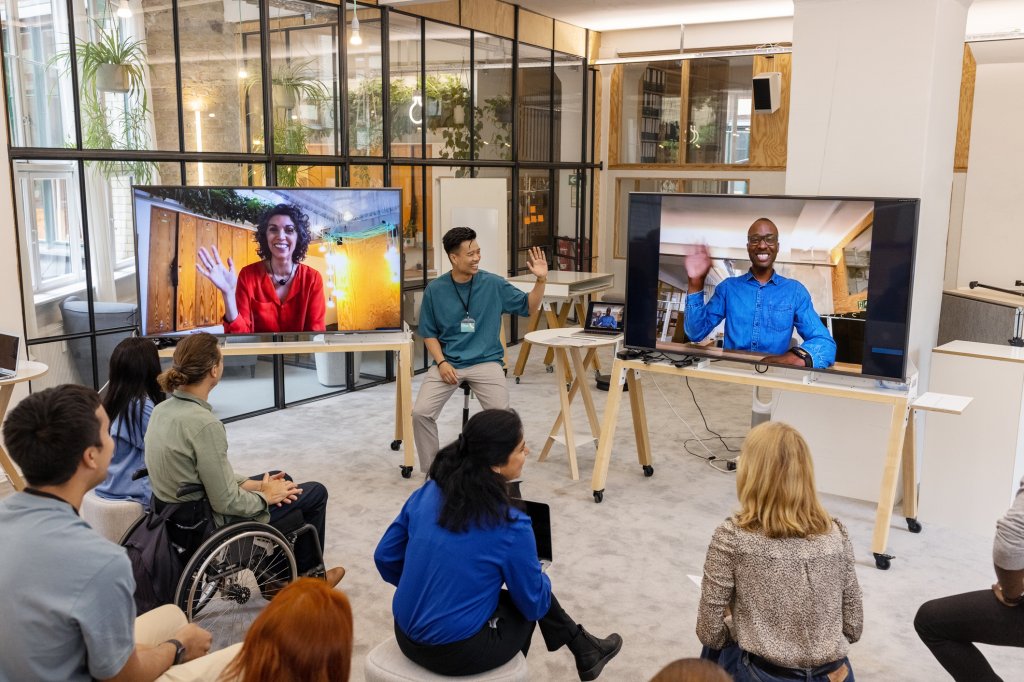Until two years ago, including some digital elements into marketing and communications sufficed for pharmaceutical organisations to feel content with their progress towards digital transformation. At the time, many brands were still dabbling on the surface of the digital world by creating social media strategies, treatment-centric chatbots or spreading thought leadership across platforms – and this sufficed.
Today, digital and social media are undeniably embedded in our lives. In January this year, Statista reported that 59.5% of the world’s population were actively online1, and each of us has personally witnessed (however actively or passively) LinkedIn becoming the new Facebook, with activity increasing astonishingly over the last months.
Digital media has made boundaries blurry between our personal and professional lives. Organisations and individuals are trying to integrate newly acquired virtual knowledge and habits, and are building the hybrid world that tech has been predicting for years. That crossover is something to capitalise online by creating ecosystems that allow for seamless transitions between the digital and the real world.
As well as the accelerated move into an increasingly hybrid world, business and corporate news are inserted into the mainstream, with strong links with current affairs and the pharmaceutical sector leading several big topics that will define our future globally – from heated debates about the NHS to data ethics and AI, from wearable tech governance to telemedicine and discussions about accelerated access of innovation to help patients worldwide.
Online news consumption is indisputably widespread across websites, apps, podcasts and social media. Now more than ever, the pharmaceutical industry needs to think digital first. We need to go from digital transformation to digital integration.
A hybrid world offers a wide array of possibilities and demands strategic thinking. We are past tactical plans disguised as strategies and merely replicating content across channels. Everyone is online and brands interact with all of their target audiences on digital platforms. The healthcare sector is at the centre of the agenda and each organisation needs to ask itself why it communicates and what for.
For successful digital campaigns and for long-term online presence, organisations need to demonstrate their purpose on every platform consistently. More so in the case of the healthcare sector, where patients are at the heart of everything. What pharmaceutical companies say and how they say it is under scrutiny more than ever in the media and across channels, and consistency is vital.
Users know what good looks like. They have experiences with many types of organisations and individuals. And they have expectations you need to manage.
No matter the number and platforms an organisation is present in, it is essential to adopt a truly hybrid, holistic approach to respond to a world where the online and offline connect ever more seamlessly. We need to engage with our audiences fluidly and meaningfully, ensuring a sustained approach that with a mid- and long-term vision.
To get started, here are three essential elements for pharmaceutical companies to consider for their integrated communications efforts:
Audience-centricity: Break down your target audiences and get to know them, what they care about and their concerns. Remember to consider them as 360 people: they’re professionals, they might be parents/siblings/grandchildren, they care about causes, they will also have hobbies and other interests.
Valuable content: What value are you providing to your audiences, and is there anything else you could add (or take out) to increase that value? Understanding who you are as a company and where you can provide value in terms of communications is key to leverage your strengths.
Platform map: Map out the different platforms and channels where you have presence, and see how they connect with each other, while looking at the different user journeys you are creating as an ecosystem. Is it clear? Does it make sense for your different target audiences? How is it supporting them and your purpose?
Having strong strategic foundations will set you up for success: think digital first and go from digital transformation into digital integration. If the former enabled you to begin using digital and social platforms, the next step is to strengthen them and build a hybrid ecosystem that truly represents your company and what it stands for, across every single online and offline channel.
[1] Statista, “Global digital population as of January 2021”, 2021







